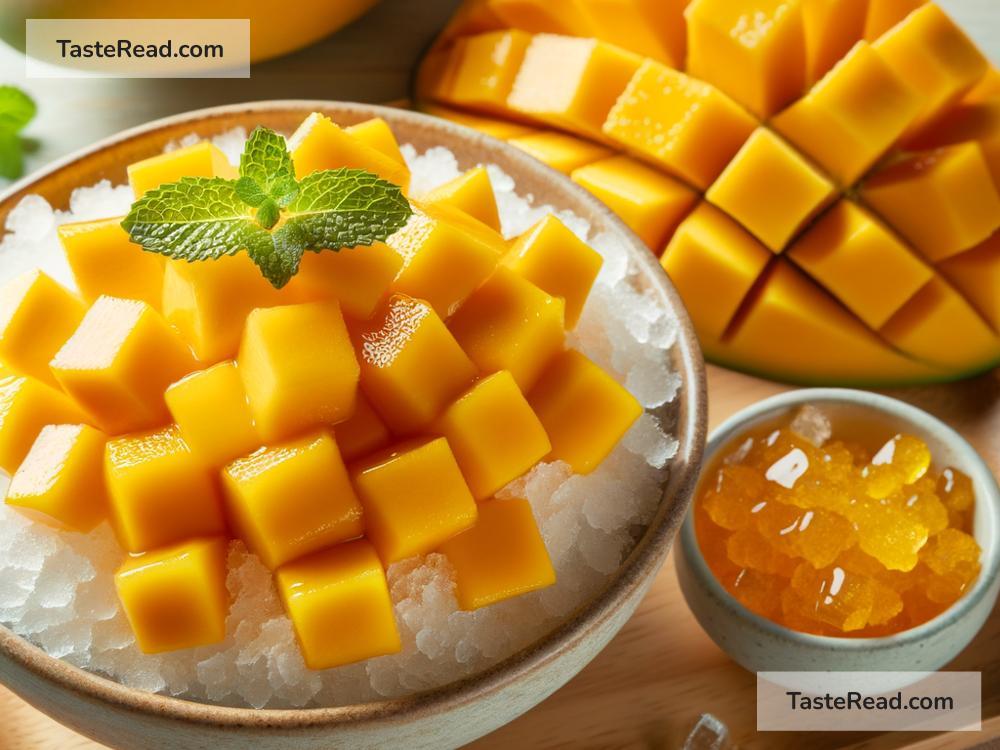The Sweet Appeal of Mangoes in Asian Desserts
Mangoes, often hailed as the “king of fruits,” are not only a beloved snack but also a key ingredient in a variety of Asian desserts. This juicy, sweet fruit brings a unique flavor and richness that enhances the taste of many sweets. From India to Thailand, mangoes are celebrated for their versatility and delightful taste. In this article, we’ll explore the significance of mangoes in Asian desserts and how they’ve become a favorite among dessert lovers.
A Cultural and Culinary Heritage
In many parts of Asia, the mango is more than just a fruit; it is a cultural symbol. For instance, in India, the mango is considered a fruit of the gods and is often associated with love and fertility. The mango season, which typically spans from April to June, is eagerly awaited each year, and the arrival of the first mangoes is celebrated with much enthusiasm. Similarly, in countries like Thailand, the Philippines, and Vietnam, mangoes are an integral part of the culinary landscape, treasured for their aroma, taste, and nutritional value.
The King in Asian Desserts
Asian desserts featuring mangoes are a perfect amalgamation of taste, texture, and aesthetics. Here are a few iconic mango desserts from across Asia that highlight the fruit’s significance:
-
Mango Sticky Rice: A classic Thai dessert that combines sweet, ripe mangoes with glutinous rice steamed with coconut milk. The creamy texture of the rice paired with the fresh mangoes creates a heavenly treat that is hard to resist.
-
Mango Lassi: This refreshing drink hails from India and is a blend of mango pulp, yogurt, and a touch of sugar. The lassi provides a cooling effect, making it a popular choice during the hot summer months.
-
Mango Pudding: Popular in Hong Kong and other parts of China, mango pudding is a smooth, creamy dessert made with mangoes, cream, and agar-agar or gelatin. It’s often served chilled and garnished with fresh mango pieces.
-
Mango Sago: A delightful concoction from the Philippines, mango sago is a dessert soup made with mangoes, tapioca pearls, and coconut milk. It’s a light and refreshing dessert, perfect for ending any meal on a sweet note.
Why Mangoes?
So, what makes mangoes such a favored ingredient in Asian desserts? Here are a few reasons:
-
Flavor: Mangoes have a unique, sweet, and tangy flavor that blends seamlessly into desserts, enhancing the overall taste without overpowering other ingredients.
-
Texture: The soft, pulpy texture of ripe mangoes adds a delightful mouthfeel to desserts, whether it’s in the form of chunks, puree, or as a topping.
-
Color: The vibrant yellow or orange hue of mangoes adds a visually appealing element to desserts, making them more enticing.
-
Nutritional Value: Mangoes are rich in vitamins A and C, along with other essential nutrients, making them a healthier choice for sweetening desserts.
Mangoes and Modern Desserts
In recent years, the popularity of mangoes in desserts has surged beyond traditional recipes. Contemporary cafes and dessert parlors are experimenting with innovative ways to incorporate mangoes into cakes, mousses, ice creams, and even cocktails. For instance, mango cheesecake and mango and passionfruit pavlova are becoming increasingly popular in fusion and Western restaurants worldwide, blending the exotic taste of mango with classic desserts.
A Fruit for All Seasons
While mangoes are traditionally a seasonal fruit, advancements in agriculture and global trade have made them available year-round in many parts of the world. This accessibility has allowed chefs and home cooks alike to experiment with mangoes in desserts regardless of the season. Frozen mangoes, while not as ideal as fresh, have also become a practical option for creating mango-centered desserts all year long.
Conclusion
The significance of mangoes in Asian desserts cannot be overstated. Their unique flavor, texture, and nutritional value make them an indispensable ingredient in the sweet culinary traditions of the region. As the popularity of Asian cuisine continues to grow globally, mangoes in desserts remain a delicious testament to the fruit’s versatile appeal. Whether it’s the classic mango sticky rice or a modern mango mousse, the love for mango-infused desserts across Asia and beyond is a sweet tradition that continues to flourish.


